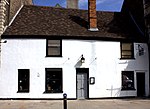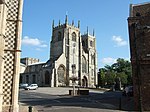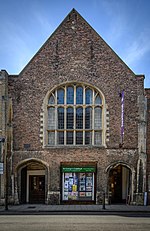The River Nar is a river in England, a tributary of the River Great Ouse. It rises at Mileham near Litcham in Norfolk and flows 15 miles west through Castle Acre and Narborough (the latter giving the Nar its name), joining the Ouse at King's Lynn. It has had a variety of alternative names, such as the Setch, the Sandringham, and Lynn Flu, though these are rarely, if ever, used today. In 2011 the Nar was recognised by the Environment Agency as one of the top ten most improved rivers in England and Wales.
The final section of the river near its mouth was diverted northwards when the Great Ouse was re-routed to a new outfall at King's Lynn after the thirteenth century. The river was made navigable from its mouth to Narborough and probably to West Acre as a result of an Act of Parliament obtained in 1751. Ten single-gate sluices and a pen sluice (or pound lock) were used to handle the change in level. The use of the river declined rapidly after the opening of a railway from King's Lynn to Dereham between 1846 and 1848. In 1884, the river was taken over by the River Nar Drainage Board, and closed to navigation, when an un-navigable sluice was constructed to the south of a Manure Factory in King's Lynn. A new sluice very close to the junction with the Great Ouse has been built more recently.
The river has been used to power a number of mills over the centuries. The buildings or remains of five are still visible, and some still contain original machinery. Narborough Bone Mill had no road access, and bones from the whaling industry and from cemeteries in Hamburg were delivered by barge, to be ground into bone meal. The mill closed when the river was taken over, and just the mill wheel remains on the bank.
The river is a 42-kilometre (26-mile) long biological Site of Special Scientific Interest.











